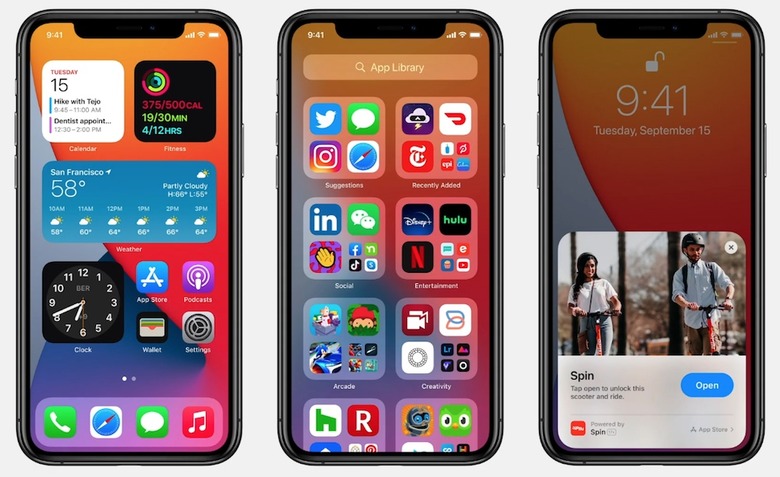Apple Was Forced To Make A Big Change On Its iPhones In Russia
About a year ago, news emerged that a new Russian law would mandate all smartphones, tablets, computers, and smart TVs to have Russian software preinstalled. Failure to comply could result in bans, the government said. It wasn't clear what that would mean for Apple devices. Android and Windows 10 device makers can preinstall apps from third-party providers, and they often do. iPhone and Mac are different in that regard, as Apple only preinstalls its own apps on them. Everything else is only available from the app stores, and the apps can be installed if and when the user chooses to do it.
A few weeks ago, reports from Russia indicated that Apple had reached an understanding with the Russian Ministry of Digital Affairs to show users a prompt when setting up a device for the first time to pre-install Russian apps. Users would start seeing then new setup screens on April 1st, Apple told a local website at the time.
Like any other company, Apple complies with local laws in any country it sells its products. Some people might have been worried about the precedent this Russian law might have set. But it turns out that the Russian government did not go as far as to force Apple's hand. Apple will not auto-install any apps on devices sold in the nation, whether they're made by the government or local developers. It'll just offer users a couple of additional screens during setup, giving them a quick way to install particular apps. The user doesn't have to install any of them.
The move went into effect as expected on April 1st, and iPhone and iPad users are already confirming the new app suggestions screens that appear on iPhone and iPad when setting up a new device.
As you'll see in the following video, all iPhone and iPad devices sold and activated in Russia will display an information screen that explains to users why they're about to get a list of suggested apps to install on their devices. "In compliance with Russian legal requirements, here are some apps from Russian developers that you may download," the App Store prompt reads.
Here is how it looks in the actual setup. pic.twitter.com/QOUwwIGSnx
— Khaos Tian (@KhaosT) April 1, 2021
After that, a list of "Russian Apps" appears, and the user can choose to install the apps that he or she might want to install from the App Store.
However, the actual installation of apps isn't mandatory. No apps will be downloaded on the iPhone or iPad unless the user taps on the "Get" button that appears next to each app. The apps suggestion screen comes with an "X" button at the top that can be used to end the set-up process. Swiping up to return to the home screen achieves the same goal.
Users can always find all those apps in the App Store, as Apple includes a selection of apps that are already approved to appear in the Russian App Store.
The setup process might be similar on Macs. While Macs allow users to install apps from other sources than the Mac App Store, Apple would probably suggest apps that have been approved in its digital store.
